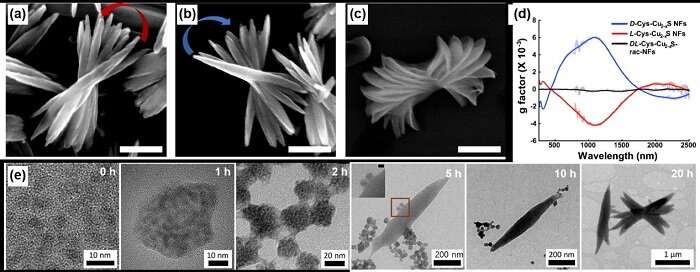Phys.org October 22, 2021
The majority of previously developed chiral nanomaterials reveal the optical activity in a relatively shorter wavelength range (ultraviolet–visible, UV–vis), not in short-wave infrared (SWIR). An international team of researchers (South Korea, USA – University of Michigan) has demonstrated a versatile method to synthesize chiral copper sulfides using cysteine, as the stabilizer, and transferring the chirality from molecular- to the microscale through self-assembly. The assembled structures showed broad chiroptical activity in the UV–vis-NIR-SWIR region (200–2500 nm). They could tune the chiroptical activity by simply changing the reaction conditions. This approach can be extended to materials platforms for developing next-generation optical devices, metamaterials, telecommunications, and asymmetric catalysts. Tuning the wavelength of polarization rotation maxima in the broad range including SWIR is a promising candidate for infrared neural stimulation, imaging, and nanothermometry…read more. TECHNICAL ARTICLE

Self-assembly of Cu2S NPs to NFs and chiroptical properties of NFs. Credit: The Korea Advanced Institute of Science and Technology